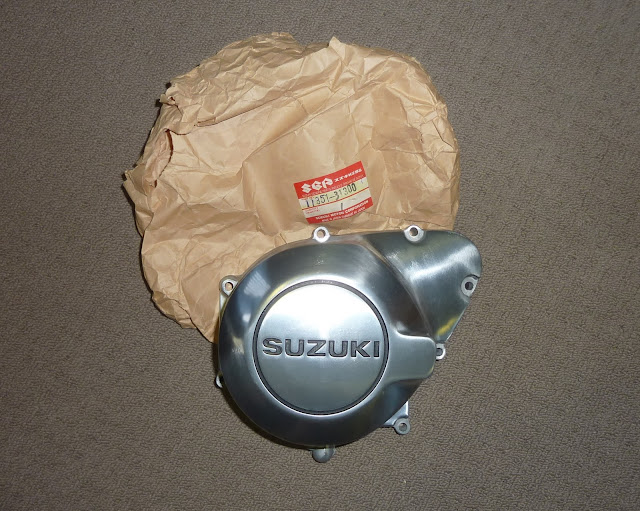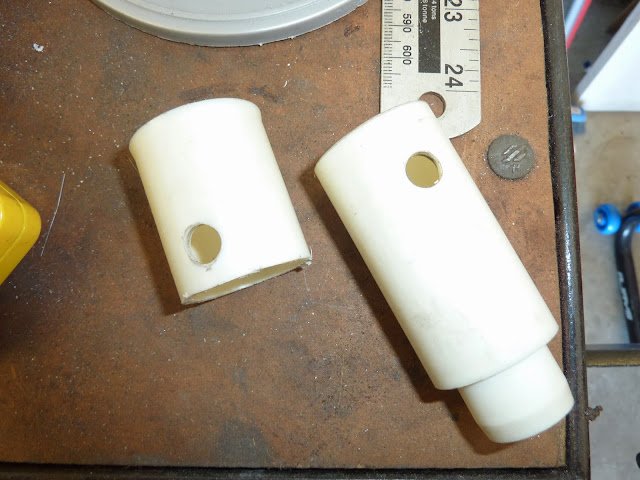Bigger is better!
So the 190/50 is apparently now old fashioned? Strange times indeed. The lower the profile the better back in the day, but now a taller, rounder tyre is the preferred choice - to give more sidewall grip if you will.
Fair call. The more grip the better; no one would disagree there.
So, with the second set of Rosso II's completely knackered (the Gixer was becoming hard work to ride fast), I perused eBay for the cheapest pair of decent 190/55 120/70 tyres I could find. Chaparral Motor Sports in the States came up trumps, AU$360, delivered, for the new Bridgestone S20's! Happy days, let's get them bought.
Cracking service.
They arrived in just over a week, so Saturday morning was spent stripping the old tyres, cleaning away the slight corrosion on the inside of the rims and slapping the new ones on. Balancing was carried out on the static rig I knocked up before, and soon they were ready to go back in the bike.
Whoop, time to play.
Lucky enough to live on a mountain, most of the roads I travel involve bends, and plenty of them. So off I go, and after a few turns I start to think I've made a huge mistake. New tyres always feel strange (our bodies have an incredible ability to adapt to the worn-out rubbish we've just taken off), but this was weird!
It wanted to fall nicely into the bends, but there was a nasty weave while leant over. Oops. After reading about the benefits of the 190/55 on a K5/6 Gixer, I was a little worried about what I was feeling. But a couple of k's in and the, let's face it, amazing human body started to relax and let the bike do what it needed to do. And then it started to click.
 |
| Bridgestone S20 190/55R17 |
Relax, don't do it...
It's the only way to ride. Mellow out, loose hands, let the bike do its thing and help it out by moving your body position to suit. I started to enjoy the new profile. Even with the front forks suffering (leaky seals, original springs), the difference in handling was stunning! The more k's the better it got.
The Bridgestones are typically soft, just take a look at the bits of rubber all over the tyre after a ride. Good enough to convince you that you're quick through the bends. Hmm, same pace on a Michelin will sort that nonsense out. But I like them! This bike has taken on a new lease of life. I even gave it a much needed wash!
Are there any bad tyres nowadays?
Probably not, I've tried to follow an old giffer on a Blackbird, shod with Shinkos, and could barely hold onto him! This (almost) pensioner is fast as bastard fu#*, goes out with no gloves, a pair of jeans and an old Goretex type jacket and this old boy could quite easily do half hour in ten minutes. On Shinkos! 'Twas an eye opener the first time I tried it on.
So while these S20's feel absolutely superb, it's hard to say whether or not the major change is because of the aspect ratio, or the tyre manufacturer. All I know is I'll be sticking to this size (although a lad who rides locally swears by the 200/55 on the same bike).
 |
| 190/55R17 Bridgestone S20R |
Chicken strips
Vanity huh? It'll take a while to get to the edge of these, and I'll be going even slower than normal to get there! Call it the safety aspect - always something in reserve to save your ass when all goes wrong. Or maybe it's time to attempt elbow down on the road?
The S20 is a good looking tyre.
As strange as that sounds, it matters a lot. I love the look of them and the feel. It's early days yet, but so far they've made one of the biggest improvements to my bike. If you've been wondering about the upgrade to a 55, give it a whirl, I don't think you'll be disappointed.
Conclusion?
Bloody brilliant. A lot of people moan that Bridgestones feel crap once worn but, in fairness, I think all tyres feel crap when worn. For now, the pizzazz is back in this Gixer, and that's all that really matters to me. I'm running 36psi front and rear at the moment, in coolish weather, and it feels perfect.
"Kneedown? Need bloody elbow sliders me!" Two Wheels Magazine.
Also...
I've got linear rate, 0.975kg springs coming from Traxxion Dynamics soon. Expect a full run through of the fitment, and how it feels on the road. No more bottoming out I hope! Stay posted.


























